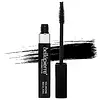What's inside
What's inside
 Key Ingredients
Key Ingredients

No key ingredients
 Benefits
Benefits

 Concerns
Concerns

 Ingredients Side-by-side
Ingredients Side-by-side

Water
Skin ConditioningIron Oxides
CI 77489
Cosmetic ColorantCI 77491
Cosmetic ColorantCI 77492
Cosmetic ColorantCI 77499
Cosmetic ColorantPolyisobutene
Acrylates/Octylacrylamide Copolymer
Butylene Glycol
HumectantGlyceryl Stearate
EmollientGlyceryl Stearate Se
EmulsifyingPEG-100 Stearate
Copernicia Cerifera Wax
Hexylene Glycol
EmulsifyingCaprylyl Glycol
EmollientPhenoxyethanol
PreservativePotassium Hydroxide
BufferingSodium Polyacrylate
AbsorbentCholesterol
EmollientOlea Europaea Oil Unsaponifiables
Skin ConditioningWater, Iron Oxides, CI 77489, CI 77491, CI 77492, CI 77499, Polyisobutene, Acrylates/Octylacrylamide Copolymer, Butylene Glycol, Glyceryl Stearate, Glyceryl Stearate Se, PEG-100 Stearate, Copernicia Cerifera Wax, Hexylene Glycol, Caprylyl Glycol, Phenoxyethanol, Potassium Hydroxide, Sodium Polyacrylate, Cholesterol, Olea Europaea Oil Unsaponifiables
Water
Skin ConditioningMica
Cosmetic ColorantCopernicia Cerifera Cera
EmollientGlycerin
HumectantOryza Sativa Cera
Skin ConditioningStearic Acid
CleansingButylene Glycol
HumectantPalmitic Acid
EmollientHydrogenated Olive Oil Stearyl Esters
Emulsion StabilisingGlyceryl Stearate
EmollientPolybutene
Synthetic Beeswax
Emulsion StabilisingAcacia Senegal Gum
MaskingVp/Eicosene Copolymer
Aminomethyl Propanediol
BufferingOzokerite
Emulsion StabilisingPhenoxyethanol
PreservativeHydrogenated Vegetable Oil
EmollientVp/Va Copolymer
Polyvinyl Alcohol
Stearyl Stearate
EmollientMaltodextrin
AbsorbentPanthenol
Skin ConditioningZeolite
AbsorbentActinidia Chinensis Fruit Extract
EmollientTropolone
Skin ConditioningPotassium Sorbate
PreservativeBiotinoyl Tripeptide-1
CI 77491
Cosmetic ColorantCI 77499
Cosmetic ColorantCI 77007
Cosmetic ColorantCI 75470
Cosmetic ColorantWater, Mica, Copernicia Cerifera Cera, Glycerin, Oryza Sativa Cera, Stearic Acid, Butylene Glycol, Palmitic Acid, Hydrogenated Olive Oil Stearyl Esters, Glyceryl Stearate, Polybutene, Synthetic Beeswax, Acacia Senegal Gum, Vp/Eicosene Copolymer, Aminomethyl Propanediol, Ozokerite, Phenoxyethanol, Hydrogenated Vegetable Oil, Vp/Va Copolymer, Polyvinyl Alcohol, Stearyl Stearate, Maltodextrin, Panthenol, Zeolite, Actinidia Chinensis Fruit Extract, Tropolone, Potassium Sorbate, Biotinoyl Tripeptide-1, CI 77491, CI 77499, CI 77007, CI 75470
Ingredients Explained
These ingredients are found in both products.
Ingredients higher up in an ingredient list are typically present in a larger amount.
Butylene Glycol (or BG) is used within cosmetic products for a few different reasons:
Overall, Butylene Glycol is a safe and well-rounded ingredient that works well with other ingredients.
Though this ingredient works well with most skin types, some people with sensitive skin may experience a reaction such as allergic rashes, closed comedones, or itchiness.
Learn more about Butylene GlycolCi 77491 is also hydrated iron III oxide. It's sole purpose is to give a red/pink hue to products.
Iron III oxides are classified as inorganic chemicals for coloring.
Synthetically created Ci 77491 is considered safer than those naturally found. This is because the synthetically created version may contain less impurities. Iron oxides are generally non-toxic and non-allergenic.
Learn more about CI 77491Ci 77499 is also hydrated iron III oxide. It is created from mixing red and black iron oxides. This helps give shades of darkness to a product.
Iron III oxides are classified as inorganic chemicals for coloring.
Glyceryl Stearate is a mix of glycerin and stearic acid.
It is used to stabilize the mixing of water and oil ingredients. By preventing these ingredients from separating, it can help elongate shelf life. It can also help thicken the product's texture.
As an emollient, it helps soften skin and supports barrier-replenishing ingredients.
In cosmetics, Glyceryl Stearate is often made from vegetable oils or synthetically produced.
This ingredient may not be fungal-acne safe
Fun fact: The human body also creates Glyceryl Stearate naturally.
Learn more about Glyceryl StearatePhenoxyethanol is a preservative that has germicide, antimicrobial, and aromatic properties. Studies show that phenoxyethanol can prevent microbial growth. By itself, it has a scent that is similar to that of a rose.
It's often used in formulations along with Caprylyl Glycol to preserve the shelf life of products.
Water. It's the most common cosmetic ingredient of all. You'll usually see it at the top of ingredient lists, meaning that it makes up the largest part of the product.
So why is it so popular? Water most often acts as a solvent - this means that it helps dissolve other ingredients into the formulation.
You'll also recognize water as that liquid we all need to stay alive. If you see this, drink a glass of water. Stay hydrated!
Learn more about Water